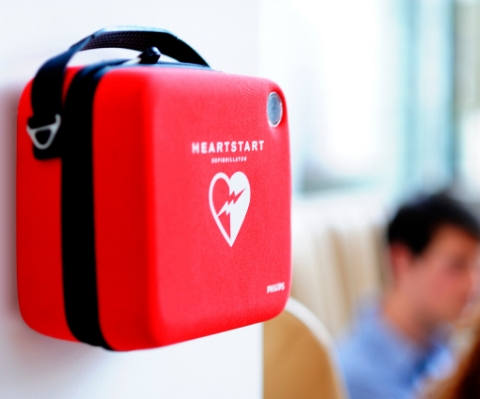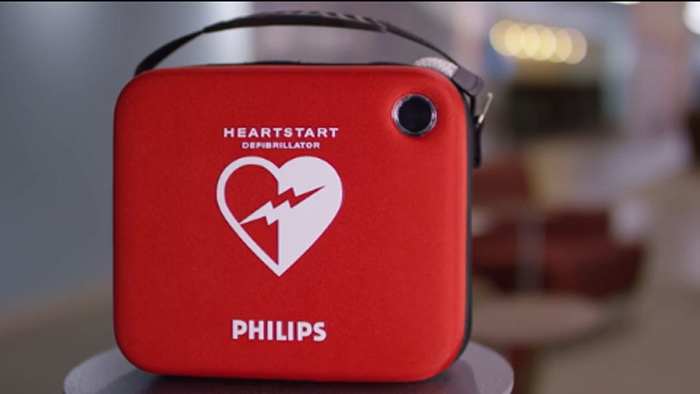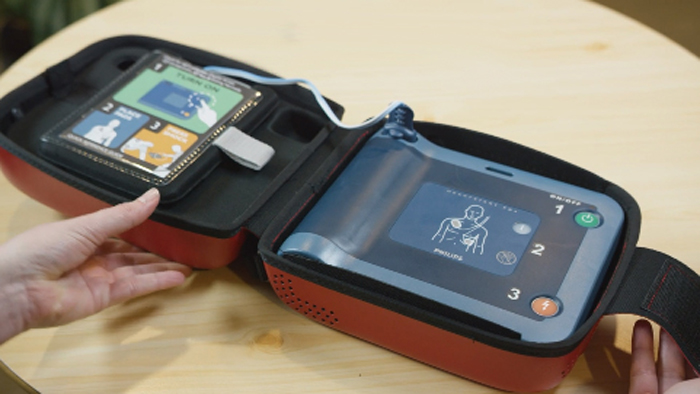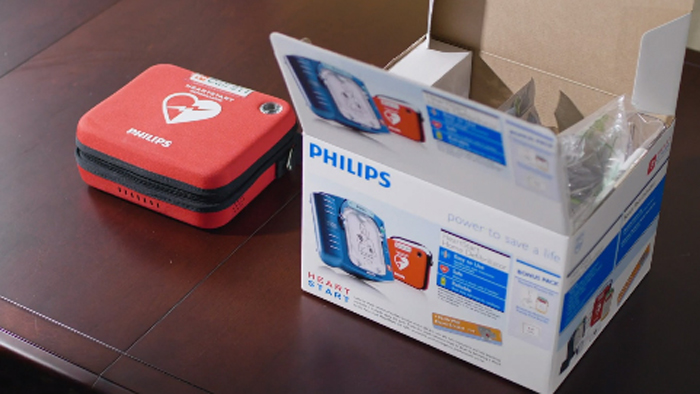Philips AEDs,
easy as 1-2-3
AEDs for offices, gyms, schools and communities
Designed for the ordinary person in the extraordinary moment, Philips AEDs are easy to use with real-time, step-by-step voice commands to help you respond to a suspected sudden cardiac arrest (SCA). With more than two-million AEDs sold around the world, Philips AEDs can be found on board major U.S. airlines, in Fortune 100 companies, in locker rooms of professional sports teams, and throughout school classrooms, gyms and sports fields.
Philips HeartStart AEDs (Automated External Defibrillator)
For the best chance of survival from sudden cardiac arrest, CPR and a shock from an AED should be delivered within the first few minutes of collapse.3 That's why Philips AEDs have simple step-by-step process with clear voice instructions to empower even inexperienced responders.
What is an AED and how do I use an AED?
Philips HeartStart AEDs guide you through the process of treating a victim of suspected sudden cardiac arrest through real-time guidance, step-by-step voice commands, and CPR guidance.
Philips AEDs are designed for the ordinary person
Philips AEDs walk you through every step of defibrillation with real-time, step-by-step voice commands and CPR guidance to assist you along the way. And the HeartStart Home and OnSite are the first and only AED available without a prescription in the United States.
It guides you through every step
When you activate your defibrillator, voice instructions will guide you through the entire process.
Setting up your AED is easy. The entire procedure is complete in just a few minutes and the device is ready to use.
Get started with AEDs
Fill out a short form and an AED expert will reach out to you as soon as possible.
Learn more about AEDs and Sudden Cardiac Arrest (SCA)

What is an AED?
An automated external defibrillator (AED) is a device that checks a person’s heart and delivers an electric shock if it has stopped beating normally. Learn more about AEDs and Sudden Cardiac Arrest.

Why Philips is the leader in AEDs
With access to the right equipment, training and support, you can help save a life. Philips HeartStart AEDs guide you through the process of treating a victim of suspected sudden cardiac arrest. The AED provides real-time guidance through step-by-step voice commands and CPR guidance.
1. Source: 2017, Cardiovascular diseasesWorld Health Organization (WHO), www.who.int/news-room/fact-sheets/detail/cardiovascular-diseases-(cvds)
2. Source: Part 4: The Automated External Defibrillator, www.ahajournals.org/doi/10.1161/circ.102.suppl_1.I-601.2.
3. Source: American Heart Association (2013). FACTS: Every Second Counts Rural and Community Access to Emergency Devices. Retrieved July 24, 2020 from https://www.heart.org/idc/groups/heart-public/@wcm/@adv/documents/downloadable/ucm_301646.pdf
More about Philips AEDs
General information
Emergency Care solutions
Audiences



